External links
| This article about a Canadian engineer, inventor or industrial designer is a stub. You can help Wikipedia by expanding it. |
| This article about a civil engineering topic is a stub. You can help Wikipedia by expanding it. |
Alfred Barrett (died 18 July 1849) was born in New England. He was an engineer by training.
In about 1818, Barrett began working on the engineering staff that was constructing the Erie Canal in New York State. He rapidly gained experience and was an accredited engineer by 1821. The project was completed in 1825.
In 1824, the Erie project was visited by William Hamilton Merritt and he likely recruited Barrett as resident superintending engineer of the Welland Canal. Over the course of his career, he worked on a variety of important projects including the Lachine Canal improvements and resident engineer on the Erie.
His professional achievements were of high importance to the development of the economy of this North American area. His early death cut short a highly productive and important engineering career.
He died in Montreal of cholera.
| This article about a Canadian engineer, inventor or industrial designer is a stub. You can help Wikipedia by expanding it. |
| This article about a civil engineering topic is a stub. You can help Wikipedia by expanding it. |

The Erie Canal is a canal in New York, United States that is part of the east–west, cross-state route of the New York State Canal System. Originally, it ran 363 miles (584 km) from the Hudson River in Albany to Lake Erie in Buffalo. It was built to create a navigable water route from New York City and the Atlantic Ocean to the Great Lakes. When completed in 1825, it was the second longest canal in the world and greatly enhanced the development and economy of New York, New York City, and the United States.

Thomas Telford FRS, FRSE was a Scottish civil engineer, architect and stonemason, and road, bridge and canal builder. After establishing himself as an engineer of road and canal projects in Shropshire, he designed numerous infrastructure projects in his native Scotland, as well as harbours and tunnels. Such was his reputation as a prolific designer of highways and related bridges, he was dubbed The Colossus of Roads, and, reflecting his command of all types of civil engineering in the early 19th century, he was elected as the first President of the Institution of Civil Engineers, a post he held for 14 years until his death.

William Jessop was an English civil engineer, best known for his work on canals, harbours and early railways in the late 18th and early 19th centuries.

John Frank Stevens was an American civil engineer who built the Great Northern Railway in the United States and was chief engineer on the Panama Canal between 1905 and 1907.
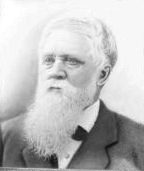
Roswell B. Mason served as mayor of Chicago, Illinois (1869–1871) for the Citizens Party.

John Edgar Thomson was an American civil engineer and industrialist. Thomson was an entrepreneur best known for his leadership of the Pennsylvania Railroad (PRR) from 1852 until his death 1874, making it the largest business enterprise in the world and a world-class model for technological and managerial innovation. He served as PRR's first Chief Engineer and third President.

Moncure Robinson was an American civil engineer, railroad planner and builder and a railroad and steamboat owner, who is considered one of America's leading Antebellum period civil engineers. He was educated at the College of William and Mary and at the Sorbonne where he studied to be a civil engineer, and his most noted project was the Philadelphia & Reading Railroad.
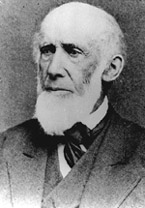
John Bloomfield Jervis was an American civil engineer. America's leading consulting engineer of the antebellum era (1820–60), Jervis designed and supervised the construction of five of America's earliest railroads, was chief engineer of three major canal projects, designed the first locomotive to run in America, designed and built the 41-mile Croton Aqueduct – New York City's fresh water supply from 1842 to 1891 – and was a consulting engineer for the Boston water system.
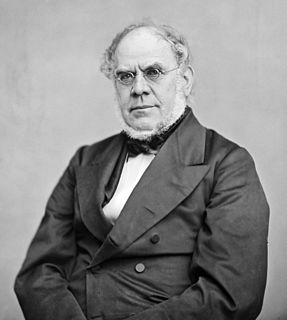
Horatio Allen was an American civil engineer and inventor, and President of Erie Railroad in the year 1843–1844.

The New York State Department of Transportation (NYSDOT) is the department of the New York state government responsible for the development and operation of highways, railroads, mass transit systems, ports, waterways and aviation facilities in the U.S. state of New York.
The Commission to Explore a Route for a Canal to Lake Erie and Report, known as the Erie Canal Commission, was a body created by the New York State Legislature in 1810 to plan the Erie Canal. In 1817 a Canal Fund led by Commissioners of the Canal Fund was established to oversee the funding of construction of the canal. In 1826 a Canal Board, of which both the planning commissioners and the Canal Fund commissioners were members, was created to take control of the operational canal. The term "Canal Commission" was at times applied to any of these bodies. Afterwards the canal commissioners were minor state cabinet officers responsible for the maintenance and improvements of the state's canals.
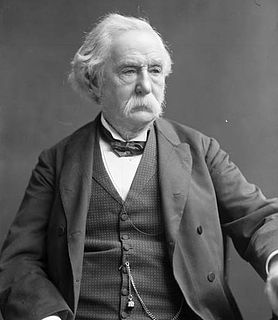
Thomas Coltrin Keefer CMG was a Canadian civil engineer.
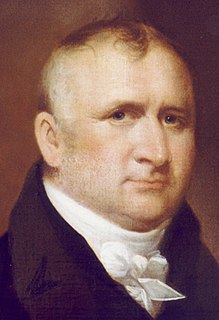
Benjamin Wright was an American civil engineer who was chief engineer of the Erie Canal and the Chesapeake and Ohio Canal. In 1969, the American Society of Civil Engineers declared him the "Father of American Civil Engineering".
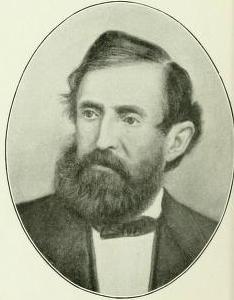
William Milnor Roberts was an American civil engineer. Roberts was one of the most prolific and prominent civil engineer of his generation in the United States. As a young civil engineer, he was involved in the construction of the Eads Bridge, held the title of the chief engineer of Northern Pacific Railroad, and was president of the American Society of Civil Engineers scarcely two decades after its founding,
William Jarvis McAlpine was an American civil engineer and politician from New York. He was New York State Engineer and Surveyor from 1852 to 1853.
William Burdick Taylor was an American civil engineer and politician from New York.
John Bogart was an American civil engineer and politician from New York. He was New York State Engineer and Surveyor from 1888 to 1891.
The office of Superintendent of Public Works was created by an 1876 amendment to the New York State Constitution. It abolished the canal commissioners and established that the Department of Public Works execute all laws relating to canal maintenance and navigation except for those functions performed by the New York State Engineer and Surveyor who continued to prepare maps, plans and estimates for canal construction and improvement. The Canal Board continued to handle hiring of employees and other personnel matters. The Barge Canal Law of 1903 directed the Canal Board to oversee the enlargement of and improvements to the Erie Canal, the Champlain Canal and the Oswego Canal. In 1967, the Department of Public Works was merged with other departments into the new New York State Department of Transportation.

George Holt Henshaw was a Canadian engineer and draftsman, who worked as engineer in waterworks and for railway companies in Canada, the United States and Denmark. He is particularly known for drafting the first organizational chart designed by Daniel McCallum.
The Schuylkill and Susquehanna Navigation Company was a limited liability corporation founded in Pennsylvania on September 29, 1791. The company was founded for the purpose of improving river navigation which in the post-colonial United States era of the 1790s meant improving river systems, not canals. In this Pennsylvania scheme, however, two rivers, a large river, the Susquehanna and a smaller one, the Schuylkill were to be improved by clearing channels through obstructions and building dams where needed. To connect the two watersheds, the company proposed a four-mile summit level crossing at Lebanon Pennsylvania, a length of almost eighty miles between the two rivers. The completed project was intended to be part of a navigable water route from Philadelphia to Lake Erie and the Ohio valley.